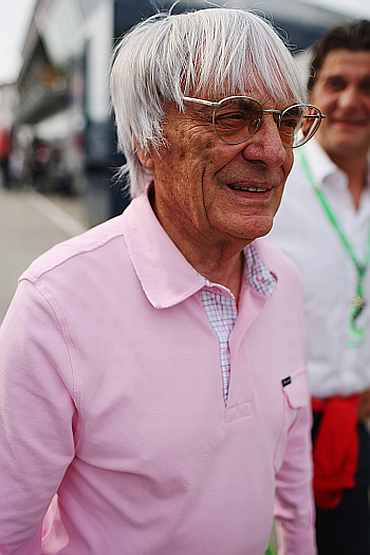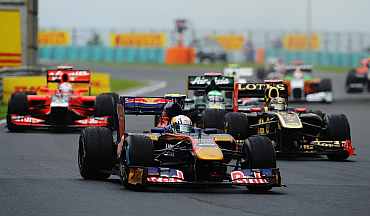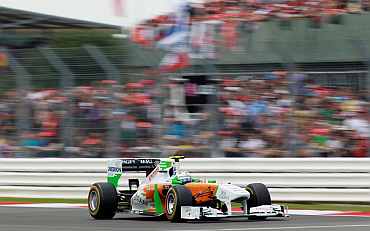
A day after Formula One head honcho Bernie Ecclestone addressed the press in New Delhi singing praises about the Buddh International Circuit in Greater Noida, circuit developers the Jaypee Group finally made way for the fans.
The tickets for the inaugural Grand Prix Of India started selling Saturday afternoon, and, despite having 120,000 seats to fill, Jaypee Sports MD Sameer Gaur bullishly declared that the bulk of the tickets will sell out within a week.
The event was held at Jaypee's golf resort in Greater Noida, a fair way from Delhi though not as far as the 40 km fans will have to travel to reach the actual circuit, constructed at a reported $350 million and still being kept far away from the media.
A brief glimpse was offered via video this afternoon, and we're promised that we'll get to experience the circuit live in a little over a month's time, after the F1 governing body, the FIA, give it a once-over in the first week of September, a final approval process known as homologation.
The race itself is, subject to that approval, scheduled for the last weekend of October, from the 28th to the 30th.

The tickets have been priced in six slabs -- Natural (Rs 2,500), Picnic (Rs 6000), Classic (Rs 6,500), Star (Rs 8,500), Premium (Rs 12,500) and the Main Grand Stand (Rs 35,000). More specific information about each stand can be found on the Jaypee Sports website at www.jaypeesports.com or bookmyshow.com, the site handling the ticketing process.
While it isn't clearly specified yet, I'd speculate that the picnic stands are a grassy stretch for spectators to loll about in more relaxed, seatless fashion, as is seen during most European races. It is, without question, one of the loveliest ways to watch a Grand Prix.
Each ticket will be applicable for all three days of the race weekend: the two timed practice sessions on Friday, practice and Qualifying on Saturday, and the race itself on Sunday.

India's only Formula One drivers Karun Chandhok and Narain Karthikeyan were around to flag off this official start to the event, and both went on and on about the 5.14 km circuit.
"I first saw it in April," laughed Chandhok, "when there was a lot of mud and a few ponds. Now I have to give them a huge hats-off, it's a dream come true to see a circuit like this in India."
Designed by Hermann Tilke, the German who has designed most of the modern F1 tracks, the circuit is a challenging and ambitious one, with extreme undulations varying the height of the track by an extreme of 14 metres, making for some severe highs and dips.
There are a few corners that are significantly wider than the rest of the track, in a bid to encourage overtaking opportunities.
From the shape and the sketches, the track seems as it claims: a 'greatest hits' package borrowing some of the finest curves from the best circuits.
And then there's a really, really long straight, one that might well make this one of the fastest circuits on the calendar. "It's a circuit with a lot of character," summed up Chandhok.

Within fifteen minutes of the time the ticketing window opened, we were informed that 257 seats had been sold, and, by the time the press conference wrapped up, over 800 had gone.
Yet these are not impulse buys, but fans who have been waiting months for the chance to pick up the tickets. Can this staggeringly healthy rate be sustained? Or are the ticket prices too high to encourage casual viewers? And will we be able to fill up 120,000 seats?
Chandhok, who doubles up as ESPN-Star Sports commentator when not being called on to drive for Team Lotus, offered an interesting statistic from the channel: that 27 million people watch Formula One on TV in India. (Which, if true, to me brings up two very pertinent questions: One, that if that many people are genuinely interested, can't we have F1 racing shown without commercial breaks, the way its watched on civilised channels around the world?
And Two, why on earth aren't we being offered a high-definition feed of F1 races yet? Clearly we don't need any clearer pictures of our cricketers being creamed.)
Yet if that figure of 27 million is true, then Gaur's absolutely right: all they need is 0.5% of that audience to show up. And to welcome the world's most glamorous sport to India, they just might.